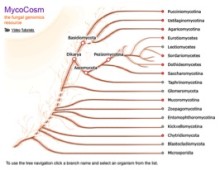The Joint Genome Institute plans to transition from a sequencing center to a “genomic foundry” — a one-stop shop for large-scale functional annotation, single-cell genomics and transcriptomics, high-throughput custom sample prep, and analysis expertise, among other proposed services, said Eddy Rubin at JGI’s sixth annual User Meeting in Walnut Creek, Calif. Ultimately, Rubin said, he…
Earth Microbiome Project in Sacramento Bee
To understand microbes (Bacterial, Archaeal, Eukaryal and Viral) in terms of whom they are and what they do is the challenge of microbial ecology. The EMP presents a revolution in how this problem is tackled and defines both questions and potential suite of tools to provide answers. Key participants in this unprecedented project include BGI,…
Earth Microbiome Project in GenomeWeb
BGI will provide a range of services and support for the Earth Microbiome Project, an effort to sample, sequence, and analyze microbial communities from all over the globe. The multi-disciplinary EMP effort, the largest sequencing project yet undertaken, will conduct metagenomics studies of 200,000 samples of microbes from soil, air, sea, and freshwater systems from…
Aureococcus genome project in Knoxville News Sentinel
The research team’s study focused on one particular strand of harmful algal blooms: Aureococcus anophagefferens. Originally, the team thought this strand would be found in the deep oceans, but the researchers discovered instead that it actually thrived in the human-affected conditions of the coastal regions. Read more at knoxnews.com
Toward a Genomic Encyclopedia of Fungi
Fungi are key components of terrestrial ecosystems and help maintain the interactions between a myriad of species of animals, plants and bacteria that make up these environments. With the ability to thrive in a wide variety of ecological niches, fungi are essential to the global carbon cycle, and the enzymes and metabolites they produce are…
Daphnia pulex project on LANL News Center
The journal Science has published the recently completed 200-million base-pair genome sequence of the water flea, Daphnia pulex. The DNA code is the largest number of genes ever recorded for a multicellular animal (more than in the human genome!), and one-third are of unknown function. Chris Detter of the Laboratory’s Genome Science and leader of…
DOE JGI’s Community Sequencing Program Project Call in GenomeWeb
The Department of Energy’s Joint Genome Institute said today that it is now accepting letters of intent from researchers seeking to use the genomics technologies available through its Community Sequencing Program (CSP). JGI’s sequencing program provides the scientific community with access to a range of high-throughput technologies for use in large-scale sequence-based genomic projects that…
Roberts Wesleyan College part of DOE JGI Undergraduate Research Program in Microbial Genome Annotation
The U.S. Department of Energy Joint Genome Institute (JGI) has chosen Dr. David Roll, professor of biological chemistry and director of Forensic Science at Roberts Wesleyan College, as one of 18 collaborators nationwide to join its Undergraduate Research Program in Microbial Genome Annotation, the College announced today. Read more at the Roberts Wesleyan College news…
Jonathan Eisen named 2011 Benjamin Franklin Laureate
Jonathan Eisen, a renowned open access advocate is awarded the tenth annual Benjamin Franklin award. This award, voted for by members of Bioinformatics.org, recognizes those providing free and open access to materials and methods in science. More information here.
Phil Hugenholtz on metagenomics and ecogenomics in Australian Life Scientist
In research published in Nature in 2007, Hugenholtz, along with collaborators from the California Institute of Technology and Diversa (now Verenium) Corporation, used metagenomics to detail the process by which a dry wood feeding termite, a Nasutitermes species, breaks down cellulose. They generated 62 million base pairs – a “drop in the ocean by today’s…
